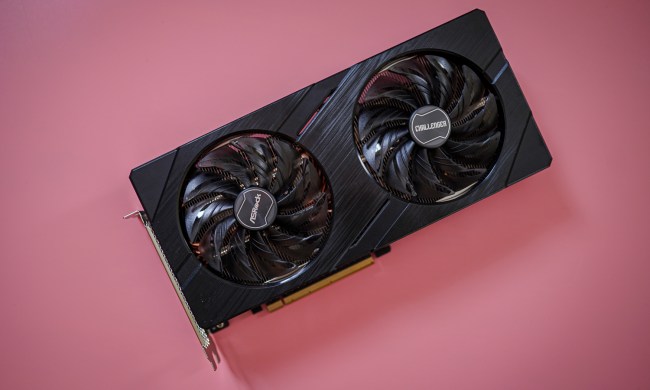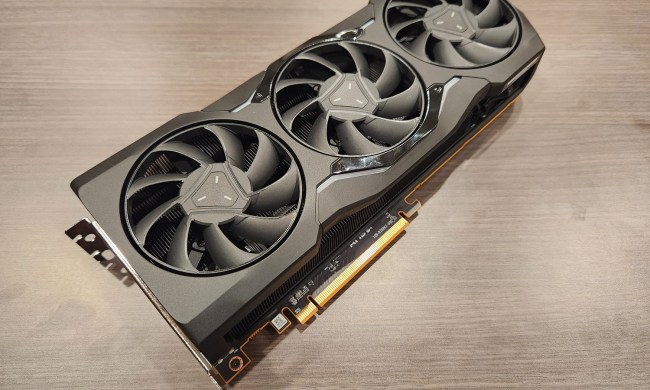Intel’s upcoming flagship GPU, the Arc A770, made an appearance in a Linus Tech Tips video. The YouTuber, joined by Intel executives Ryan Shrout and Tom Petersen, talked about the GPU, showed off some of its performance, and discussed Intel’s strategy for Arc Alchemist.
According to the video, Intel is going to focus on the price-versus-performance ratio when it goes to battle with its competitors, AMD and Nvidia. Does that mean that we have some decent budget graphics cards coming up, or does Intel still have a long way to go with Arc Alchemist?
Intel went all-in on DirectX12
It has long been suspected that Intel Arc Alchemist might greatly benefit from various optimizations. Although the GPUs have not yet made it to market in any major quantities, the benchmarks we’ve seen all showed that, while Intel Arc can hold its ground in benchmarks, it falls flat in gaming scenarios. The insights from Linus Tech Tips’ latest videos only reinforce that belief — Intel Arc has potential, but it still needs some work.
Intel joined Linus for his latest video in order to talk about the card, and both Petersen and Shrout maintained a down-to-earth attitude, even going as far as to help Linus promote a few products throughout the video. It certainly seems that Intel is aware of Arc’s limitations, and that is what the video is centered around — what the card can do well and what it can’t. Although Linus was technically not allowed to show any definite performance figures, the YouTuber still gave the A770 a spin in Cyberpunk 2077, F1 2021, and Shadow of the Tomb Raider.
It’s in the last of the three titles that one of Intel Arc’s weaknesses is exposed — the GPU works much better with DirectX12 than it does with DX11, showing a performance improvement of up to 45%. Shrout explains this in the video by saying: “The Arc team targeted new standards hard. […] Our lightweight driver is very good at speaking directly to the GPU hardware in DX12.” However, this focus on DX12 results in DX 11-based games being unable to fully utilize the power of the Arc A770 hardware.
Linus estimated that, without overclocking, the Arc A770 was maintaining around 50 to 60 frames per second (fps) in Cyberpunk 2077. This was done on high settings at 2560 x 1440 resolution. At the same resolution, the GPU was able to hit over 180 fps in F1, but Cyberpunk 2077 is a much more taxing title, so seeing Intel Arc A770 perform well there is encouraging. However, Cyberpunk 2077 is among the games that Intel considers “tier one” as it promotes the lineup.
It’s all about the price at this point

Petersen explained this so-called “tier strategy” in the video. The company is well aware that gamers may want to choose any number of games to play, and with countless titles to choose from, achieving optimization in all of them is tricky. As Linus notes, both AMD and Nvidia had much more time to work out the kinks and are able to deliver a more streamlined experience. Unfortunately, that is not the case with Intel Arc, which is Intel’s first discrete gaming GPU. What makes matters worse is that a lot of the most popular titles utilize DX11, or even older versions, as opposed to DX12.
To simplify this, Intel split games into three tiers. Tier one encompasses the games that work very well with Intel Arc, such as Cyberpunk 2077. Tier two includes titles that are less optimized to work with Intel GPUs, but they still support modern APIs, such as DX12 and Vulkan. Intel expects that those games will perform well regardless of the lack of optimization. The last and presumably biggest tier features all the games where Intel Arc will underperform — meaning games on DirectX11 or earlier.
In a world where the best GPUs are currently available at much lower prices than just a year ago, that’s a harsh environment for Intel to release its first GPU in. This is why, according to Petersen, Intel hopes to compete on performance-per-dollar as opposed to raw GPU power. In the video, Petersen says: “We’re gonna kill everyone in price-to-performance.”
With Nvidia and AMD both ready to release next-gen GPUs later this year, price is truly going to be a big factor for Intel Arc. Although the two executives haven’t shared the pricing for the Intel Arc A770 yet, if it’s truly affordable, many less-demanding users might still be willing to give Intel Arc a try.




